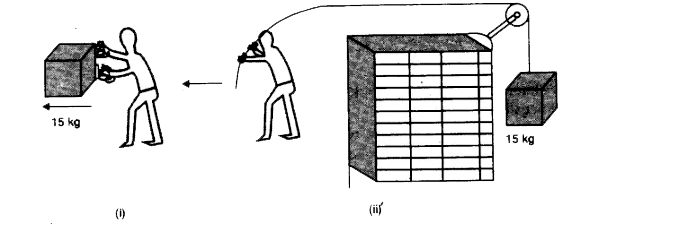A comet orbits the Sun in a highly elliptical orbit. Does the comet have a constant : total energy throughout its orbit ?Neglect any mass loss of the comet when it comes very close to the sun.
According to the law of conservation of energy, the total energy of the comet remains the same throughout its motion.
Topper's Solved these Questions
Similar Questions
A comet orbits the Sun in a highly elliptical orbit. Does the comet have a constant (a) linear speed (b) angular speed (c) angular momentum (d) kinetic energy (e) potential energy (f) total energy throughout its orbit? Neglect any mass loss of the comet when it comes very close to the Sun.
View SolutionA comet orbits the Sun in a highly elliptical orbit. Does the comet have a constant (a) linear speed (b) angular speed (c) angular momentum (d) kinetic energy (e) potential energy (f) total energy throughout its orbit? Neglect any mass loss of the comet when it comes very close to the Sun.
View Solution
Knowledge Check
A comet orbits the Sun in a highly elliptical orbit. Does the comet have a constant (a) linear speed (b) angular speed (c) angular momentum (d) kinetic energy (e) potential energy (f) total energy throughout its orbit? Neglect any mass loss of the comet when it comes very close to the Sun.
A(i),(ii),(iii)B(iii),(iv),(v)C(iii) and (vi)D(ii),(iii) and (vi)A comet is revolving around the sun in an elliptical orbit. Which of the following will remain constant throughout its orbit?
AKinetic energyBPotential enegyCLinear speedDAngular momentumA comet is moving around the earth in.highly elliptical orbit. Identify the incorrect statement
AIts K.E. and P.E. both change over the orbit.BIts T.E. changes over the orbitCIts linear momentum changes in magnitude as well as in direction over the orbit.DIts angular momentum remains constant over the orbit
A comet orbits around the Sun in an elliptical orbit. Which of the following quantities remains constant during the course of its motion?
View SolutionWhere is the Sun in relation to the comet's orbit?
View SolutionAnswer the following:
a) The casing of a rocket in flight burns up due to friction. At whose expense is the heat required for burning obtained? The rocket or the atmosphere?
b) Comets move around the sun in highly elliptical orbits. The gravitational force on the comet due to the sun is not normal to the comet's velocity in general. Yet the work done by the gravitatonal force over every complete orbit of the comet is zero. Why?
c) An artificial satellite orbiting the earth in very atmosphere loses its energy grdually due to dissipation against atmospheric resistance, howerver small. Why then does its speed increase progressively as it comes closer and closer tothe earth? d)In fig i) the man walks 2m carrying a mass of 15 kg on his hands. In Fig ii) he walks the same distance pulling the rope behind him. The rope goes over pulley, and a mass of 15 kg hangs at its other end. In which case is the work done greater?

View SolutionA comet orbits around the Sun in an elliptical orbit. Which of the following quantities remains constant during the course of its motion?
View SolutionA comet is in highly elliptical orbit around the Sun. The period of the comet's orbit is 90 days. Some statements are given regarding the collision between the comet and the earth. Mark the correct statement. [Mass of the Sun =2×1030kg, mean distance between the earth and the Sun =1.5×1011m.]
View Solution
